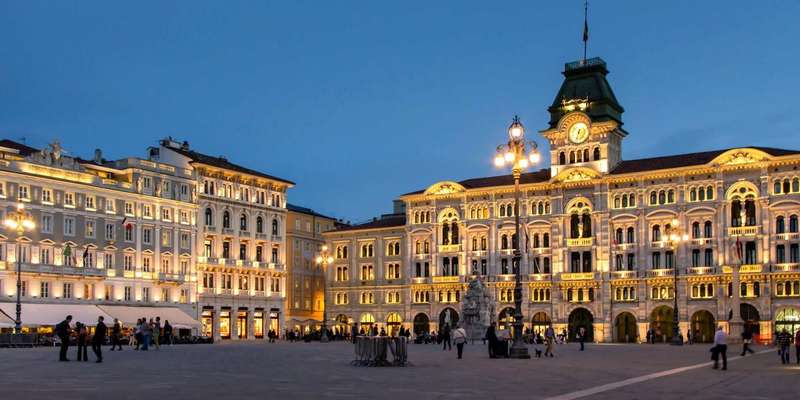- Home
- Useful Tips
- Visiting Trieste's lesser-known...
Most visitors to Trieste marvel at its grand piazzas and Habsburg-era cafes, yet few discover the city's secret art nouveau masterpieces tucked away in quiet neighborhoods. Over 70% of travelers miss these architectural treasures entirely, unaware that Trieste boasts one of Italy's most concentrated collections of Liberty-style buildings. The frustration comes when you later learn you walked right past exquisite floral facades and wrought-iron balconies simply because they weren't marked on tourist maps. Unlike Venice or Rome where every palazzo is well-documented, Trieste's art nouveau wonders remain local knowledge - their intricate details and histories known mainly to residents. This creates a particular ache for architecture lovers who leave realizing they've missed something extraordinary just blocks from their hotel.


Why standard guidebooks miss Trieste's best art nouveau
Traditional travel resources focus overwhelmingly on Trieste's imperial Austro-Hungarian landmarks, creating a blind spot for its vibrant Liberty-style architecture. The city's art nouveau buildings emerged during its early 20th-century economic boom, when wealthy merchants commissioned local architects to design homes blending Viennese Secessionist influences with Mediterranean flair. Because these weren't civic monuments but private residences, they escaped mainstream attention. Compounding the issue, many gems sit along secondary streets like Via Torino or Via Cadorna rather than main thoroughfares. Even knowledgeable locals sometimes debate which buildings qualify as pure art nouveau versus eclectic revival styles, making consistent documentation challenging. This explains why you'll find more complete information about Trieste's Roman theater than its spectacular Casa Bartoli or the floral fantasy of Palazzo Vivante.
The four must-see art nouveau facades only locals know
Start your architectural hunt with Palazzo Scaramangà on Via Torino, where sea-themed mosaics and shell-shaped balconies showcase Trieste's maritime identity. Just two blocks away, Casa Smolars on Via Dante features a breathtaking stained glass cupola visible from the street - arrive near sunset when light transforms it into a jewel box. For quintessential Liberty curves, seek out the former Magazzino Hruby near Piazza della Borsa, its wrought-iron vines seeming to grow organically from the structure. Finally, the often-overlooked Villaggio Rittmeyer complex reveals how art nouveau extended to social housing, with ceramic floral motifs adorning even modest workers' apartments. These buildings remain in active use as homes and offices, so admire respectfully without entering private spaces. Early mornings offer the best light for photography with fewer pedestrians.
When to visit for optimal art nouveau appreciation
Timing proves crucial for experiencing Trieste's architectural treasures. Unlike museums with set hours, these buildings reveal their details differently throughout the day. Morning light between 8-10 AM beautifully illuminates the west-facing facades of Via Cadorna's buildings, highlighting Carlo Coppedè's intricate stone carvings. Midday works best for shaded porticos like those on Via Imbriani, where you can study ceiling frescoes without squinting. Many structures incorporate stained glass that comes alive in late afternoon - particularly the nautical motifs in Casa Selvaggio's stairwell windows. Weekdays see less foot traffic than weekends, allowing uninterrupted viewing. Should you visit in May, coinciding with Trieste's Modo Liberty festival grants access to normally private interiors during open-house events. Otherwise, content yourself with exterior admiration and occasional lobby glimpses when doors open for residents.
How to identify authentic Liberty style elements
Distinguishing true art nouveau from later imitations enhances your architectural hunt. Authentic Liberty buildings in Trieste share distinct characteristics: flowing asymmetrical lines mimicking nature, often seen in wrought-iron balcony designs resembling vines or waves. Look for organic motifs - iris flowers, dragonflies, or marine life - rendered in mosaic, stucco, or cast iron. Windows typically feature curved tops or stained glass with botanical patterns. Original color schemes favored earthy tones like ochre and sage green, though some later repaints might surprise. Beware of 1920s buildings masquerading as Liberty - these often have more geometric Deco influences. For verification, check for construction dates between 1900-1914 and architect names like Arduino Berlam or Ruggero Berlam. When in doubt, the tourist office's free Art Nouveau Trail pamphlet helps separate true gems from merely attractive facades.



